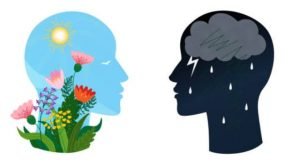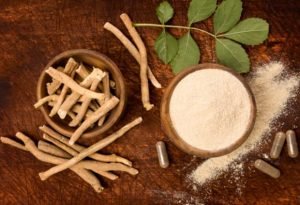
by admin | Jun 2, 2022 | Mental Health
Anxiety Relief Tea’s
Have you ever wondered which herbal teas are beneficial to your stress levels? Herbal teas are an excellent alternative to chemically powered prescription medications for reducing stress and tension. For thousands of years and across different cultures, they have been used and practiced for their therapeutic and medicinal effects.
Maybe it’s time you joined the club! Whether it’s financial concerns, family obligations, meeting deadlines, or dealing with economic depression, the list is infinite, stress may attack us all, young and old at any time. Unfortunately, whether we like it or not, it has become the standard and plays a significant role in our daily lives, especially of late. Many people will turn to synthetic pharmaceuticals for a ‘quick fix,’ unaware of the long-term consequences on their bodies and minds.
Not all stress, however, is harmful. Some people work and perform better under certain stress, but if stress is prolonged, panic can set in and things can get a little out of hand! Our bodies are built to withstand, and often thrive on, small bouts of stress, but too much of it isn’t good for us.
Stress has always existed and evolved over time, and the practice of blending and drinking herbal teas for this prevalent ailment is still practised today. So, if you’re annoying your partner with your mood swings or ready to pull your hair out, maybe try one of these herbal tea mixes to reclaim your sanity and theirsJ
Catnip

My cats love it and I am forever finding them in the catnip herb garden, there must be something in itJ But Yes, I get what you’re thinking, it’s for cats!!…but humans can also eat it! It’s known as the “anti-stress herb” and has been used to treat uneasiness and children who have had a horrible dream in the past. It’s even been used for insanity, not that it’s suggested you let your stress levels get so bad! It has a calming and soothing impact, and it can also be used to relieve stress and anxiety caused by nicotine or drug withdrawal. So get some growing in the herb patch and even your feline friends will thank you.
Peppermint

This plant is regarded as a “cure-all” in England, and it is listed in the Bible as one of the herbs used to pay taxes! It’s been used to cure hysteria ( again not suggesting you let it get that far, oh no) and nervous illnesses, and it’s also a great way to relieve stomach pains and cramps. So pick some up in the supermarket.
Ginseng
The moniker “king of tonics” is believed to mean “world wonder,” and the Chinese see this herb as a supreme treatment for all ailments. It is a powerful antidote to stress, and in the West, it is used to treat nervous and mental exhaustion-related loss of appetite, stomach and digestive diseases.
Chamomile
Chamomile, sometimes known as the “all-around comforter,” is a natural sedative and one of the greatest herbal teas for calming and soothing frayed nerves. This is due to its anti-spasmodic characteristics, which aid in the relaxation of your body’s muscles. It is usually even safe to use with restless youngsters due to its powerful relaxing and calming properties but always check before with your doctor, midwife or care provider as things are always changing and its best to stay up to date with recommendations.
Kava Kava
Kava Kava, often known as the “mood adjuster,” works by working on the nerve centres and stimulating them to ease anxiety, tension, and emotional stress. It’s also a gentle natural sedative that can provide a sense of calm without causing any loss of attention or changes in motor reflexes.
Valerian
Valerian is known as ‘Phu’ because of its peculiar and disagreeable odour. Valerian includes compounds known as ‘valepotriates,’ which give it sedative properties. It’s also known as “nature’s tranquilliser,” a sedative and anxiety reliever administered to civilians during WWII to help them cope with the stress of continuous air attacks. It’s still a very popular herb today to aid restful sleep and calm nerves.
Passionflower.
Passionflower lowered anxiety during four weeks in one well-designed study; the herbal cure was just as efficient as a common anti-anxiety prescription. It is thought to be effective in treating agitation, irritability, depression, and opiate withdrawal. It’s available as tea or as liquid extract drops.
Lavender
In a recent study, lavender oil was found to relax people and regulate numerous symptoms similar to the prescription drug Ativan on patients with generalised anxiety symptoms. It is a non-sedating essential oil that can be inhaled or given as a crushed supplement in capsule form. Even having the lavender plant in your room promotes wellbeing as it’s aroma is beautiful and calming.
Lemon balm

After just one dose of tea using the dried herb, it has been demonstrated to lessen anxiety. Lemon balm can be used in aromatherapy, or as drops in a bath for an overall anxiety calmer.
Ashwagandha
This is a herbal supplement that is provided as a standardised supplement to help with anxiety symptoms. Ashwagandha has been demonstrated in several studies to reduce the stress hormone cortisol as well as anxiety-related symptoms. It has no serious side effects and can be taken for a long time. It was found to be superior to Ativan in one study. It can be taken as a prepared tea or the powder can be added to other beverages.
L Theanine
Both black tea and green tea include L-theanine, a water-soluble amino acid. It can be consumed as a tea or as a supplement in the form of a pill. It’s non-addictive and doesn’t have any sedative effects. It is thought to reduce anxiety and stress-related symptoms by acting directly on brain regions.
Herbal medicines contain certain unique qualities that aren’t seen in benzodiazepines, which are usually used to treat anxiety. They’re all-natural vitamins that have been used for millennia with great success. They’re also non-addictive and mild on the body. Herbal tea is a safe and simple approach to maintain daily emotions of serenity. Herbal teas and the above-mentioned procedures can be utilised to assist ease anxiety symptoms without causing addiction or unpleasant side effects.
Note: However as always, before you attempt them, check with your doctor to make sure they won’t interact negatively with any other medications you’re taking or that there are no contraindication’s for your particular situation. They are, for the most part, free of adverse effects. However, it’s vital to keep in mind that herbs can interact with sedative medicines and other medicines, so proceed cautiously and see your doctor or a herbalist before beginning.

by admin | Jun 1, 2022 | Health
How Common Is Therapy And Why
Realizing It’s Okay To Ask For Help We’ve all been in a situation in which we needed help. Despite that, many people feel some sort of discomfort when they have to ask for assistance, be it for something personal, in a work environment, or even just to ask for directions.
This phenomenon led to a stigma surrounding mental health and therapy, which has proven to be detrimental for most people and their mental wellbeing. However, in recent years there’s been a shift in the way we perceive therapy entirely. More and more people are starting to understand that it’s never a bad idea to take care of yourself and ask for help when you need to. With this in mind, here is how common therapy has gotten in the last few years and why.
The Numbers

One in four people in the world experiences at least one diagnosable health problem throughout their life, and roughly one in every eight receives some sort of mental health treatment. This number is almost double compared to that from ten years ago, which is a positive fact considering that around the same number of people have had mental issues then and now.
Depression has been the leading mental diagnosis for the last few years, with it affecting roughly 11% of the population, or around 792 million people. Here is where we should mention one very important thing about mental health: around half of all lifetime illnesses start by the age of 14 and 75% by the age of 24.
Although this might sound scary at first, we can use this knowledge to our advantage by being more mindful of this age group and taking care of their mental health in the very beginning. A positive statistic concerning this statement is that younger people are much more likely to seek help actively. The number of people under the age of 35 that are not only okay with getting mental health care but are intently searching for it is way higher than that of older generations, and this is definitely a step in the right direction.
The Reasons
Most people start this journey because of something specific – either an event or newly formed feelings or thoughts. Although they might not be able to explain exactly how this is affecting them, they realize that something has changed and have decided to seek help.
Another reason why people go to therapy is to get advice on self-discovery or personal relationships. This is connected with the fact that it’s always helpful to have an objective and well-informed opinion on something that troubles you, especially if you’re unsure how to fix the problem yourself. Others start going to a psychologist because they’ve noticed their health is getting worse with seemingly no reason – maybe they’re having trouble sleeping or feel out of breath, perhaps their immune system is down, and they feel stressed all the time.
Whatever it is, they’ve noticed something is up with the way their body usually is and want to understand why this is happening.
However, not all inciting reasons are negative.
Some people start going to therapy to become the best version of themselves and become more confident – they see going to a psychologist as a boost to their lives in the direction they’re aiming for.
Take-Home Message
Regardless of the specific occasion people go to therapy for, they have shared that taking care of themselves in this way has had a positive effect on some aspects of their life and their future. Despite the different reasons and outcomes, therapy is a good idea for most people because it is strictly individual and, as such, can help with pretty much anything.
It has become a common part of the lives of more and more people that want to change themselves for the better and understand the world and their place in it.
Do YOU go to therapy? Share your experience below!

by admin | Jun 1, 2022 | Diet
How Does Diet Affect Your Mental Health
Eating healthy isn’t only good for your physical health, look and skin. It also can help you become more responsive, awake, and focused on things that really matter.
But, how are diet and mental health connected? Let’s find out together!
Diet and Mental Health Relationship

The food you eat and the way you feel share a complex relationship. When you feel blue, you are more likely to grab junk food to comfort yourself. Therefore, mental health affects your cravings. But, it acts in the opposite direction, too.
The food you eat has various vitamins, minerals, and nutrients that reach the brain and cause certain chemical reactions. The exact chemical reaction in your brain depends on the food and its nutritive value. A particular food, that is sometimes called – brain food, triggers good reactions, and increases the positive response in the brain.
On the other hand, some foods affect your mental health negatively. Refined sugar makes you feel better instantly, but once the short-term reaction in your brain passes, you’ll feel the negative effects of it. The other group of foods that isn’t good for your mental health prevents the brain from transforming nutrients into the things that the brain needs. For example, butter isn’t very good brain food. Instead of supporting good memory, focus, and feeling-good hormone release, butter is related to decreased cognitive function.
There is more research to be done on how saturated fats and refined sugars decrease brain functions. Until the results are ready, you should limit the intake of these ingredients.
Eating With Other People

Diet and mental health aren’t only connected throughout the particular food intake. The diet includes all eating habits, including sharing meals with other people and eating preferences. Sharing meals is significant for your mental health because when you eat in a group, you develop connections with other people and focus on something other than food.
Studies have shown how important family meals are for the mental health of adolescents. Those who have frequent dinners with their families reported lower risks of depression, social anxiety, and overall level of dissatisfaction. They are also at a lower risk of substance abuse. Mealtimes include everything from food preparation, eating, and cleaning afterward. Because you need to eat every day, mealtimes are an important part of your daily routine, and the habits you develop affect your mental health.
Eating Disorders as Part of Complex Food-Mental Health Connection
If you need more reasons to spend time reflecting on your diet and eating habits, let’s discuss eating disorders. The reasons why eating disorders occur aren’t still clear. But, more and more evidence suggests that the choice of food isn’t the only factor that leads to eating disorders.
An eating disorder can be connected with an unhealthy approach to food or your body image. Each eating disorder requires a specialized approach and treatment. It affects the overall well-being of the person, not only physical health.
Food Can Make You Feel Great or Bad
Food can make you feel good about yourself, in terms of energy levels, overall feeling and mood boost. Some foods are excellent for concentration, such as fatty fish, green leaf, berries, etc. On the other hand, if you have to take the maximum of your brain power, avoid sugary drinks, fast food, alcohol, mercury-rich fish, etc.
Are mental health or physical health and body appearance better motivation for you to build healthier eating habits and choose food wisely? Share your thoughts in the comments!
Don’t forget to give the article a thumbs up, if you learned something new! Please consider sharing the article with your friends and family to help them understand the importance of diet for their mental health.

by admin | Jun 1, 2022 | Technology
How Does Eidetic Memory Work
Remembering So Well It’s As If You Are Looking At A Photograph We all know that people remember things with different techniques. It is also a common fact that which type of memory you excel at is more of an innate talent than a trained methodological ability.
Here we talk about one specific type of memory, which is relatively rare. Eidetic memory is a really fascinating way to remember things with specific attention to detail. This article is a brief explanation of exactly how it works, so without further ado, let’s learn!
The Definitions
Firstly, what exactly is eidetic memory? Well, this term is used for the ability to remember an object or an image with high precision for some time after seeing it, without the usage of a mnemonic device. The word eidetic comes from the Greek word εἶδος, pronounced “eidos” which means “visible form.”
Most people describe this type of memory as “seeing the object in question in their minds after only looking at it in the real world for just a few seconds.”
Sounds pretty cool right?
It is, but it’s also very rare, especially if we’re considering the quality of the memories themselves. Roughly less than 10% of children have an eidetic memory, and the number is even smaller in adults. It is speculated that this is because the more we grow up, the more we start depending on words and associations rather than images for our memory. It’s important to mention that of the few people who do have this ability, almost all subconsciously change their memories at least a bit.
This is true for every type of memory one might have and it can happen for different reasons, from telling the story to get specific responses, to forgetting certain bits of information, to even having our memories changed because of the way others reacted. However, this phenomenon can be found in every type of memory and is not something innately unusual.
There is, however, a very odd concept concerning eidetic memory which aims to oppose this occurrence, namely the question, “Is it possible for the brain to remember things just like a photograph?” This idea is called photographic memory, and although it may sound similar to what we’ve previously described, it isn’t exactly the same.
True photographic memory is the ability to see pages of words or numbers for a very short time and recite them perfectly just from memory. The principle it uses is effectively the same as the way a printer works – copying everything to the last detail and producing an exact duplicate – but just by remembering it. Seeing as photographic memory is such a demanding ability, it has not been proven to exist yet.
The Mechanism

Okay now that we have all the basics, how does this rare skill work? Eidetic memory is controlled mainly by the posterior parietal cortex of the brain, which is the part responsible for visual information. The brain, generally speaking, has two sorts of memory – short and long term.
Eidetic memory is part of the first one, or more precisely, it’s the very first few moments after seeing an object, when an image of it is temporarily captured by our brains. If the information is unimportant, it is discarded, and if we decide we need it – it is stored in the short-term memory.
In order for someone to say they have an extraordinary eidetic memory, one’s short-term memory has to be filled with these “photos” of the items and surroundings in question. An accurate example of true eidetic memory could be imagined in a very ordinary situation. Picture that you put your keys on the table instinctively and go about your day. After a few hours, you realize you forgot where you put them, so you trace your steps back in order to find them.
A person with eidetic memory would have an almost exact photo of where his keys were, how they were positioned and what other items were around them, and even where their shadows were pointing. A person with a regular memory would still remember they were on the table, but not have these details.
To Summarize
So what is the conclusion about this interesting phenomenon? Although there are people who have better short-term memory than others and those who train it excel even more, there is no resounding evidence that absolute photographic memory exists. Still, the ability to remember things well is something many of us strive for.
This is why there are numerous techniques to train the different ways we remember as well as some designed specifically for those who want to be eidetic. So if you want to get better, you most certainly can, and with time you’ll be able to amaze yourself and your friends with your abilities!

by admin | Jun 1, 2022 | Mind
How Does Isolation Affect The Human Brain
The Two Different Types
With the global pandemic happening in the world right now, many of us are thinking about how isolation can affect us. It’s a scary thing to think about even though we have been living with the new restrictions for almost two years now.
We believe that there’s a lot you can learn from a situation like this, however, which is why we decided to create this article series. In this first part here, we will explain the two types of isolation, and in the second one, we’ll shed some light on how you can deal with it in order to feel better!
Ready to learn something new? Let’s go!
Self-Isolation

The modern world is a noisy place.
We’re constantly bombarded with so much information and so many opinions that it can be overwhelming just to keep up with the day’s events. And in our efforts to avoid all the distractions and noise in life, we often find ourselves retreating into isolation instead of connecting with others.
Global Pandemic
We all know of the new restrictions most governments have placed on the public and why it is so essential to follow them. Physical distancing, quarantining, laws on traveling – all these things affect us in a certain way regardless of the fact that we understand why they’re important. If we take the first one, for example, we can understand a lot about how we as human beings feel.
We are social creatures, made to be in the company of others. Although people think that physical contact can be neglected if we are still allowed to talk to each other, this pandemic shows that’s not the case. The levels of anxiety and depression have jumped since this situation became global, and most psychologists believe that the lack of physical contact is one of the leading reasons.
Interestingly, people resort to self-isolation due to the fear of experiencing negative consequences from this modern-day plague.
The Research

With the current state of the world, research about the effects isolation has, is booming. Campaigns and seminars regarding the subject have been launched in Denmark, Australia, and the UK. They are organized both by the countries and volunteers.
Their aim is to raise awareness of the issue and to give some ideas on how to cope with similar states. A different research group is focused on how loneliness can affect our physical health. Thanks to many organized, professional studies, we now know that this feeling may even be more dangerous than obesity and similar conditions.
Self-isolation is also connected with higher risks of depression and dementia and can be detrimental to the development of kids and teenagers.
Interesting Facts
Loneliness can be a significant health risk – some doctors even compare it to smoking 15 cigarettes a day. Our immune system is also affected by how lonely we feel – we tend to have weaker antiviral responses and higher inflammation.
Our cognitive skills are also impaired – we find it harder to focus, string thoughts together, and articulate our ideas. When given different sorts of tests, most of us start struggling even with questions that seemed easy to us before.
Imposed Isolation
Yes, it’s true – In many cases, we will decide to isolate ourselves because, well, it feels right. Even though self-isolation is accompanied by feelings of loneliness, it is somehow soothing.
When it comes to the full manifestation of the side-effects of isolation however, there is nothing worse than imposed isolation.
Prisons

It’s no wonder that high confinement is a punishment in prisons. We use human contact not only to know more about the world and feel different emotions but to affirm our own sense of self. Many psychologists believe that inmates in super-maximum security conditions don’t lash out because they’re angry. They just need some sort of a reminder that they’re still human and violence is one surefire way to incite a reaction from the guards.
This is why imposed isolation is so scary – it removes your sense of identity and connection to the real world.
Research
Here we can talk about the notorious Stanford prison experiment. It took place in the university itself in 1971, and its goal was to show the effects such an environment has on young people.
The participants were students divided into either guards or prisoners, and the expected time for the project was two weeks. However, the experiment was forcefully stopped after six days due to the increasing brutality of the “guards” and the concerns of the parents. A different research was designed to take away senses completely.In it, some paid volunteers (mainly college students) were put in sound-proof cubicles with no human interaction and limited sensory stimulants.
They were given cotton gloves to reduce the sensation of touch, U-shaped pillows to reduce sound, and translucent visors to reduce vision. After just a few hours, the volunteers started feeling restless and then began to hallucinate. This experiment was also shorter than expected in order not to have any permanent damage on the participants.
Interesting Facts
Although this was not imposed isolation, a choice, the discoveries this trip led to are fascinating.In 1961 a geologist who was exploring an underground glacier in the Alps decided to stay there for two months. Because of the darkness and lack of time-measuring tools, his perception of time slowed down a lot.
When he got out, it took him 5 minutes to count to what he thought was 120 seconds. A different story about darkness and isolation shows that we also change our sleep cycles when under extreme conditions. In 1993 a sociologist spent 366 days in an underground cavern (he thought that it was merely 219 days), and his sleep cycle drastically shifted. He spent most of the time being awake for 36 hours and sleeping for 12.
Final Thoughts
For us, as people, our surrounding environment has an immense influence. There is definitely a lot we can learn about ourselves through the different situations we experience, and isolation is no different. Although it sounds like a negative thing at first, it is a source of knowledge for everyone, which is always good.
The following article of this two-part series discusses how to change your perspective regarding isolation into a more positive one. We also give some advice and ideas on what to do to keep yourself entertained in these trying times, so be sure to stay tuned with us for part two!
See you there!






















